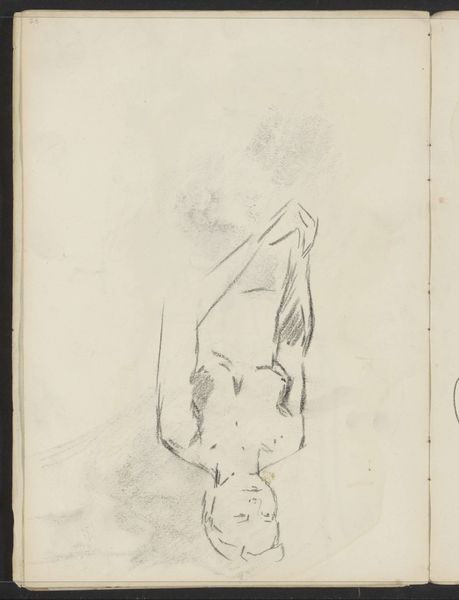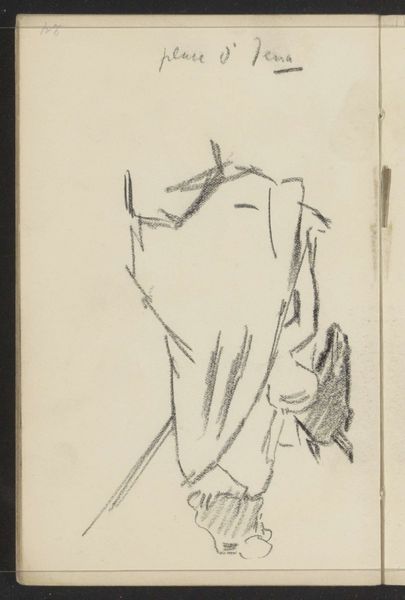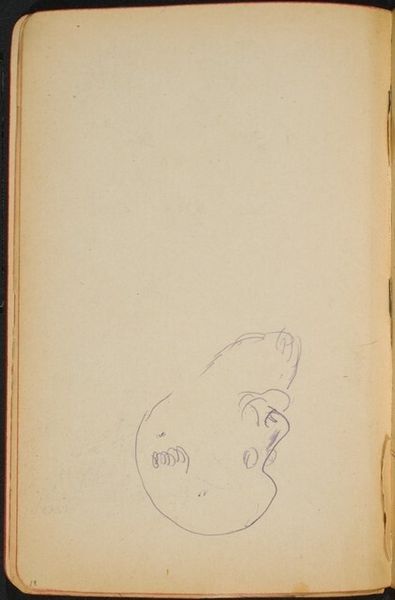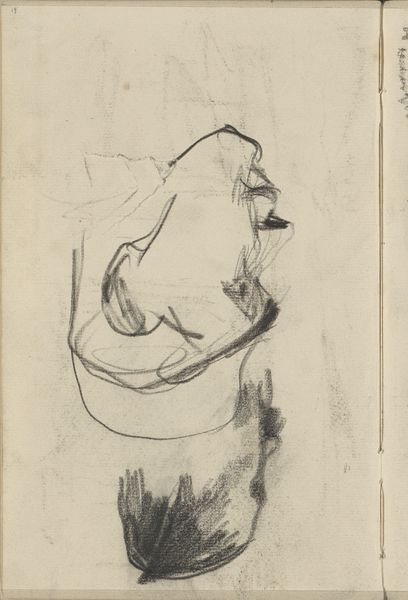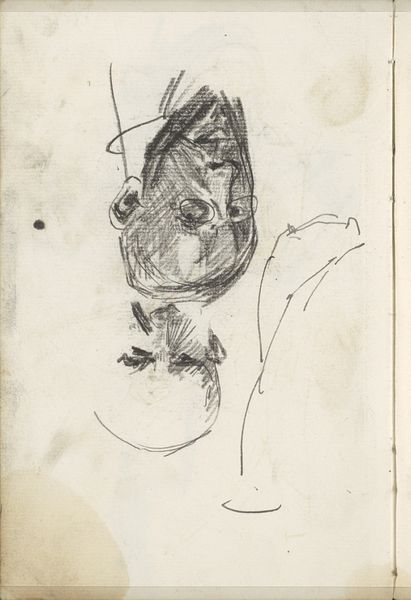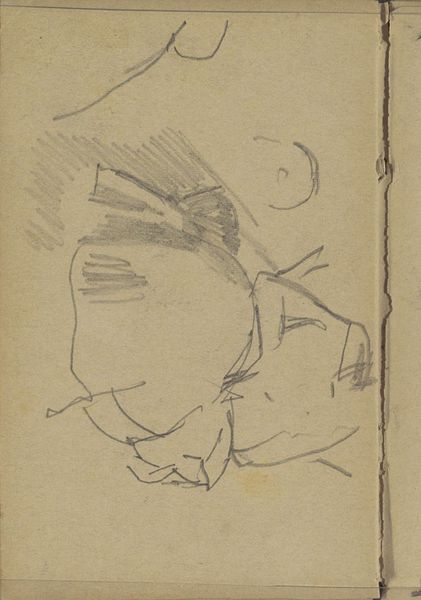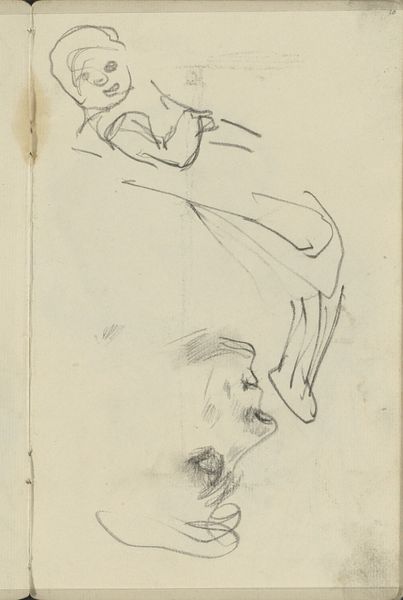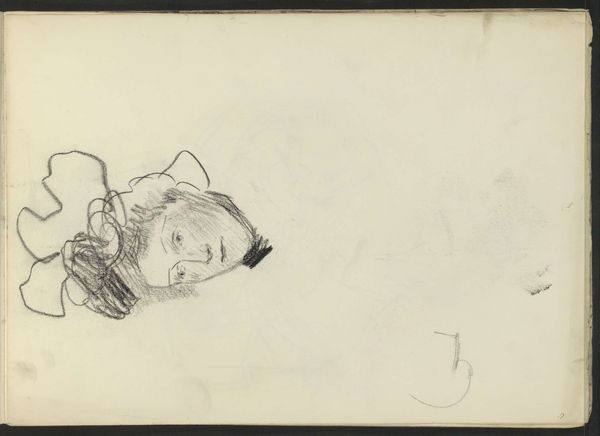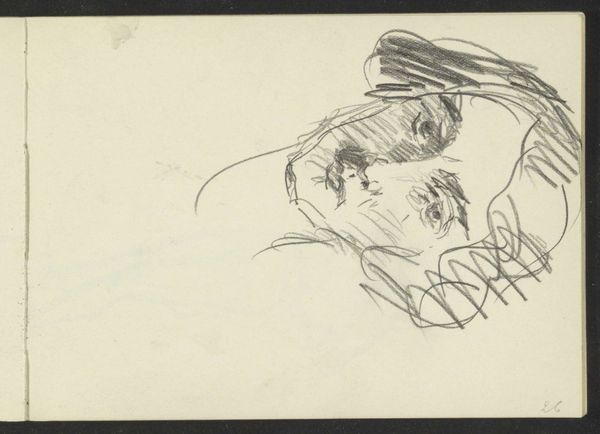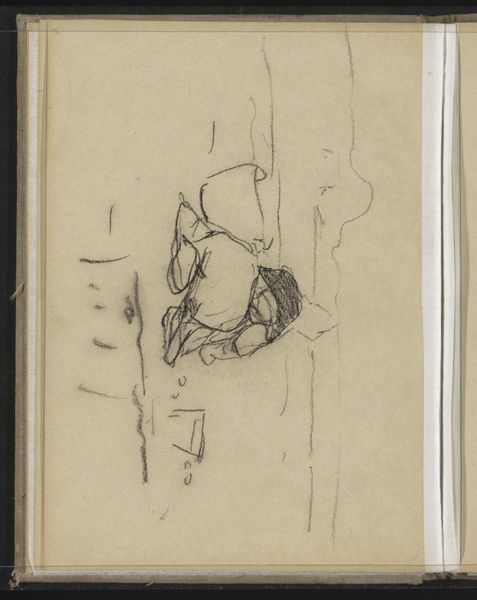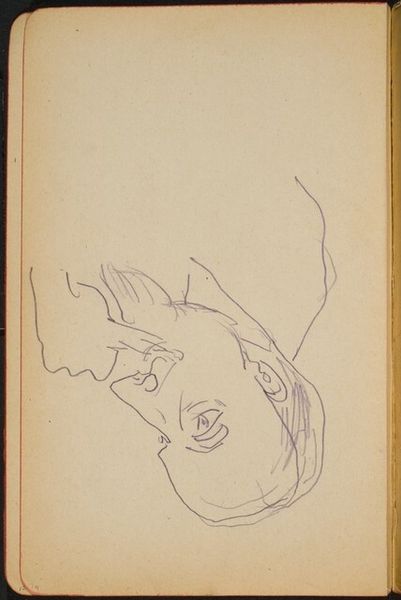
drawing, paper, graphite
#
portrait
#
drawing
#
paper
#
graphite
#
realism
Copyright: Rijks Museum: Open Domain
Curator: Today, we are observing a drawing by Isaac Israels, a work titled "Vrouwenhoofd met hoofddoek," or "Head of a Woman with Headscarf." Executed between 1887 and 1934, it is a graphite on paper study currently held at the Rijksmuseum. Editor: There's a sense of intimacy here, isn't there? The way the lines are so delicate, almost tentative. It feels like peeking into someone's private thoughts, or catching a fleeting moment. Curator: Precisely. The artist masterfully employs graphite to create subtle tonal gradations and textures. Note the layering of strokes that delineate the headscarf. It’s not merely a representation of fabric, but a formal exploration of light and shadow. Editor: For me, it is almost like the drawing captures a breath, that brief pause just before someone speaks or smiles. Her face, caught with such spare strokes, becomes this open field for feeling, you know? The tilt of her head creates such melancholy, no? Curator: The realist style serves to foreground the object itself, while the negative space around the figure amplifies her presence within the picture plane. Editor: Yes, it’s not just realism. It’s charged. Did she know she was being watched, being drawn? I think not. Look, even the texture of the paper itself seems to whisper of impermanence, of moments slipping away. It's moving. Curator: Indeed. The application of such raw materials amplifies the immediacy between artwork and viewer. We find ourselves as if we're witnessing the moment the artwork appears into being before our eyes. The portrait almost seems to embody semiotic codes relating to the subject's emotional state, no? Editor: Sure, if you see the formal language as codes. I suppose I feel instead the silent scream of women unseen... and yet here, she is immortalized. It is interesting to witness two voices see, but not really hear, the same thing. I've never seen so much expressed through so few strokes of graphite on paper! Curator: I'm compelled to add how this simple and powerful formal exercise in portraiture invites questions of structure, line, and balance. Editor: Thank you, formalist... Well, whatever it evokes for anyone, this is what art should do. Make you feel seen too, no?
Comments
No comments
Be the first to comment and join the conversation on the ultimate creative platform.

